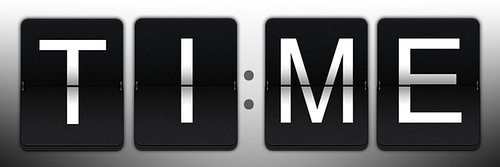Data i godzina Posted by Kasia on Sep 28, 2010 in Culture, Vocabulary
Different style conventions and habits exist around the world for dates (daty) and times (czas) in writing and speaking. Examples:
- The order that a year, month, and day are written.
- How weeks are identified.
- Whether the 24-hour clock or the 12-hour clock is used.
- The punctuation used to separate elements in all-numeric times.
The first system for denoting abbreviated dates used roman numerals for months (e.g., 11 XI 1918 for Independence Day – Dzień Niepodległości). The current year can be replaced by the abbreviation “br” (bieżącego roku) and the current month can similarly be replaced by the abbreviation “bm” (bieżącego miesiąca), in which case the year is omitted altogether. Now 11. 11. 1918 is preferred.
The month’s name is written where enough space is provided for the date; the month is in genitive case (because of the meaning e.g., “first day of May”) and the ordinals are often followed by a period to indicate they are ordinal; the date is often preceded by the abbreviation “dn.” (day – dzień) and followed by the abbreviation “r.” (Year – rok), as in “dn. 1. maja 1997. r.”. The month’s (miesiąc) name can be abbreviated to three initial letters where an actual date stamping device is used, e.g., on letter envelopes.
Poland adopted the ISO 8601 standard for date format in official, especially electronic, communication in 2002. For everyday usage and for less official papers, however, the traditional formats d.m.[yy]yy or dd.mm.[yy]yy (i.e., 7.8.2008, 07.08.2008, 07.08.08) are very common in Poland because of speaking order: “day month year”.
A 12-hour clock is used in private communications; a verbose day time is appended to distinguish among morning, forenoon, noon, afternoon, evening and night. A 24-hour clock is used in official documents, the clock starts at midnight (except when DST is used). The day breaks at 4 AM according to common sense albeit several broadcasters extend their published schedules till 6 AM.
When the hour goes by itself, it is preceded by the abbreviation “godz.” (for hour – godzina); when it is accompanied by minutes, this introductory abbreviation is not needed. Minutes are traditionally superscripted to the hour and underlined, as in 1745 (even in typewritten documents). According to Polish printed publishing’s norm, a dot is used to separate hours and minutes when not using superscription but popularity of electronic devices caused the dot to be often replaced with a colon (less official).
The 24-hour clock is a convention of time keeping in which the day runs from midnight to midnight (od północy do północy) and is divided into 24 hours, indicated by the hours passed since midnight, from 0 to 23. This system is the most commonly used time notation in the world today.
A time of day is written in the 24-hour notation in the form hh:mm (for example 01:23) or hh:mm:ss (for example, 01:23:45), where hh (00 to 23) is the number of full hours that have passed since midnight, mm (00 to 59) is the number of full minutes that have passed since the last full hour, and ss (00 to 59) is the number of seconds since the last full minute. In the case of a leap second, the value of ss may extend to 60. A leading zero is added for numbers under 10.
Jaki dzień dzisiaj jest? – What’s today’s date?
Or you can also say:
Który dzisiaj jest? (shorter way to use it in casual conversation)
27 (dwudziesty siódmy wrzesień or dwudziesty siódmy września) – September 27th
Która godzina (more casual way)/ Która jest godzina – What time is it?
15 minutes – 15 minut (kwadrans)
30 minutes – 30 minut (pół godziny)
12:00 – południe
24:00 – północ
13:00 – trzynasta or pierwsza po południu (1pm)
12:15 – dwunasta piętnaście or piętnaście (minut) po dwunastej or kwadrans po dwunastej or kwadrans po południu
17:30 – siedemnasta trzydzieści or trzydzieści minut po siedemnastej or w pół do osiemnastej (which would translate „half an hour to 6pm”)
12:00 – dwunasta or południe
24:00 – dwudziesta czwarta or północ
02:45 – druga czterdzieści pięć (rano) or czterdzieści pięć (minut) po drugiej or kwadrans do trzeciej (15 minutes till 3)
I can’t help it and I have to share this video with you:
Do następnego razu! (Till next time…)

Build vocabulary, practice pronunciation, and more with Transparent Language Online. Available anytime, anywhere, on any device.
About the Author: Kasia
My name is Kasia Scontsas. I grew near Lublin, Poland and moved to Warsaw to study International Business. I have passion for languages: any languages! Currently I live in New Hampshire. I enjoy skiing, kayaking, biking and paddle boarding. My husband speaks a little Polish, but our daughters are fluent in it! I wanted to make sure that they can communicate with their Polish relatives in our native language. Teaching them Polish since they were born was the best thing I could have given them! I have been writing about learning Polish language and culture for Transparent Language’s Polish Blog since 2010.





Comments:
Karola:
Oh my goodness! What a good laugh! :))
rob i hazel:
jest dobry filmu
Do$a:
tu niestety muszę się nie zgodzić, bo mieliśmy na polskim niezły ochran za taki błąd. NIE MOŻNA napisać 1.maja 1997.r. – to jest niepoprawnie. Tam już w nawiasie masz dobrze. A więc w czym problem? W głupich kropkach. Datę powyżej powinniśmy zapisać 1 maja 1997r.(kropka jest tylko po skróceniu słowa rok czyli literce “l”). Tę datę możemy również zapisać w postaci 1.5.97r. albo 1 V 1997r. (bez kropek w rzymskich cyfrach).
W potocznym języku polskim nie mówimy też: “Jaki dzień dzisiaj jest?” tylko “jaki jest dzisiaj dzień?”. Trochę poprzestawiałaś wyrazy i śmiesznie to zabrzmiało. Normalnie tez pytamy: “który dzisiaj?” i to wystarcza. 🙂 No i raczej mówimy dwudziesty siódmy WRZEŚNIA, a nie WRZESIEŃ. Nie jest to jednak tak strasznie niepoprawne.
ogólnie dobra robota i fajny filmik ;p